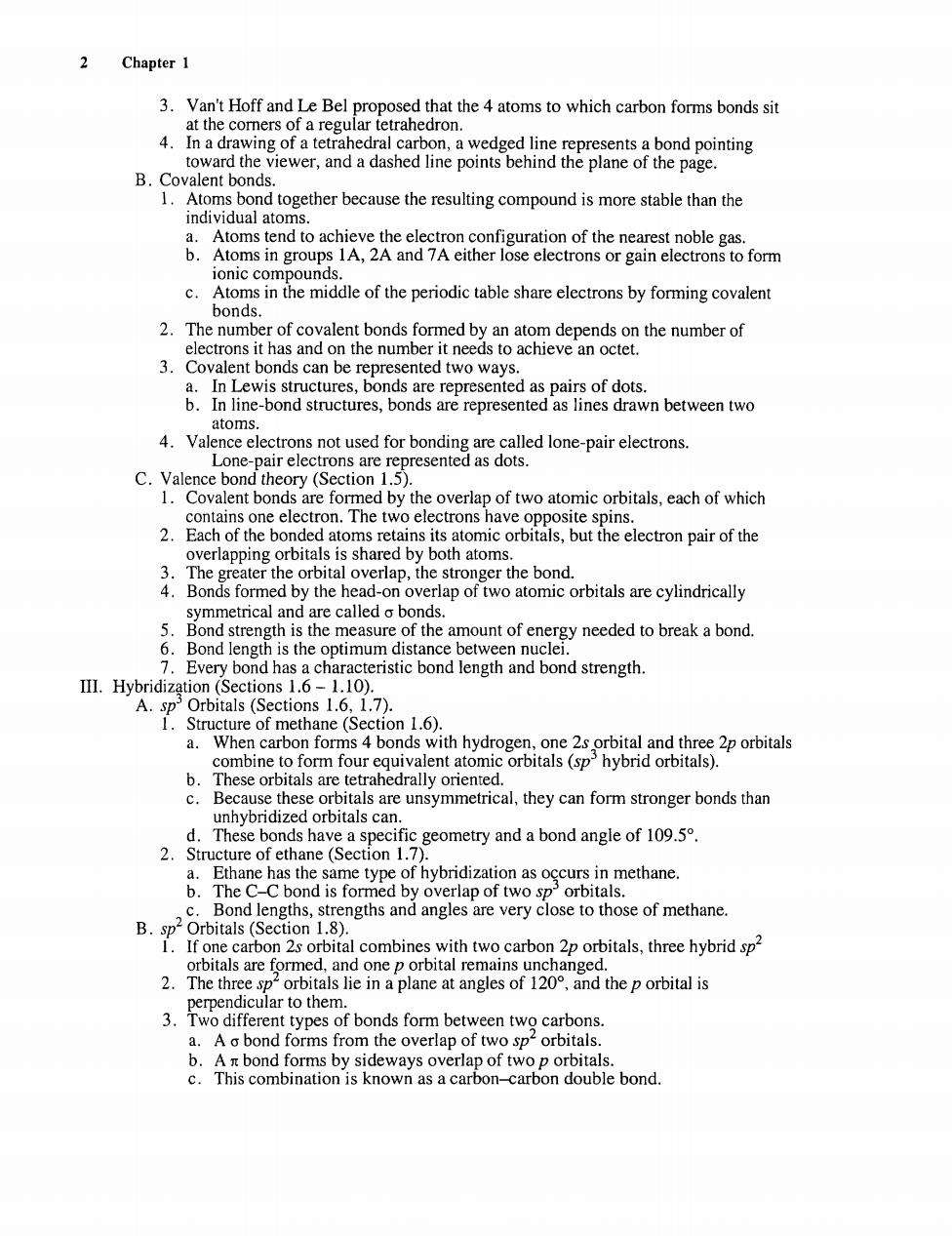正在加载图片...

2 Chapter 1 3.Van't Hoff and Le Bel proposed that the 4 atoms to which carbon forms bonds sit 4.ofa regula tetrahedron. nd pointing B.Covalent bonds 1.Atoms bond together because the resulting compound is more stable than the ind A tion of th rest noble to form ionic con c.Atoms in the middle of the periodic table share electrons by forming covalent 2.The mber of covalent bonds formed by nds electrons it has and on the number it needs to achieve an octet. on the number of 3.Covalent bonds can be represented two ways. res,bo nds are represented as pairs of dots s drawn between two 4.Valence electrons not used for bonding are called lone-pair electrons. Lone-pair elec c ons are represented as dots. ed b the overlan of two atomic orbitals each of which contains one electron.The two electrons have posite spins. 2.Each of the bo s sha by both atoms 3. overlapping orbital symmetrical and are called a bonds Bond strength is the measure of the amount of energy needed to break a bond. Bond leng is the optimum distance erween nucle n (ond length and bond strength a. n ca mms 4 bond ith le orbita orbital b. rahedrally oriented. c.Because these orbitals are unsymmetrical,they can form stronger bonds than orbitals can geometry and a bond angle of 109.5 2. re of etha ne has the same type of hybridization as occurs C bond is forn ed rlap of two sp orbitals. angles are very close to those of methane. 1R engths and I.If one carbon 2s orbital combines with two carbon 2p orbitals,three hybrid sp nd one p orbital remains oar to 3.Two different types of bonds form between two carbons. a.A o bond forms from the overlap of two sp2orbitals. b.A n bond forms by sideways overla c